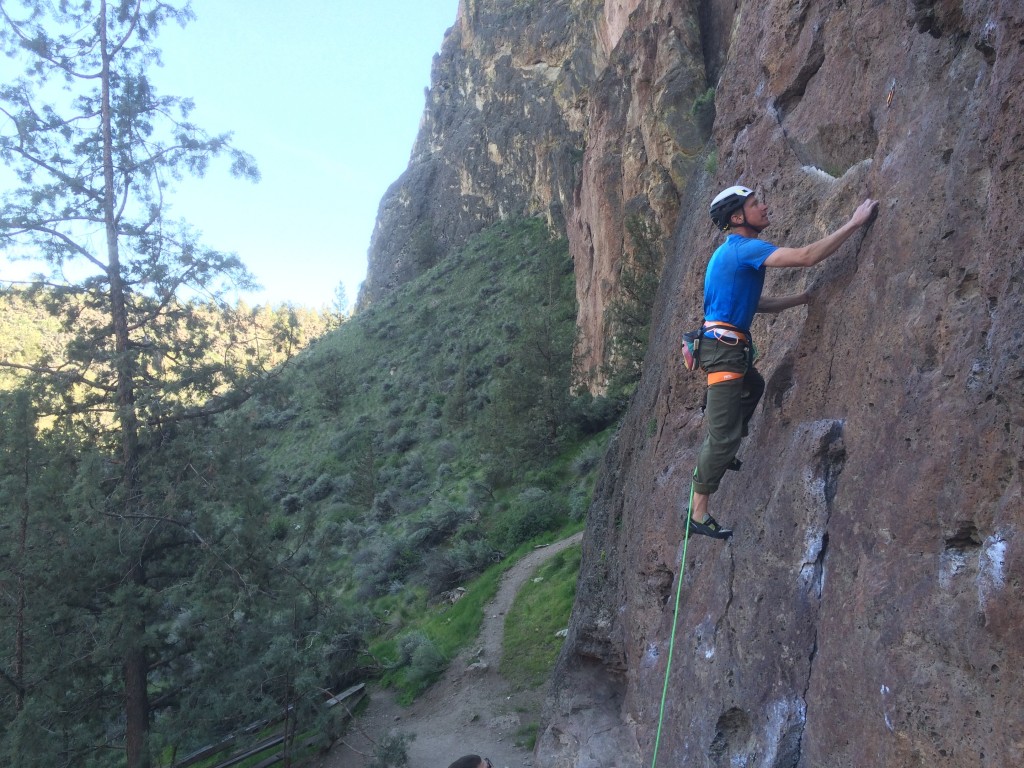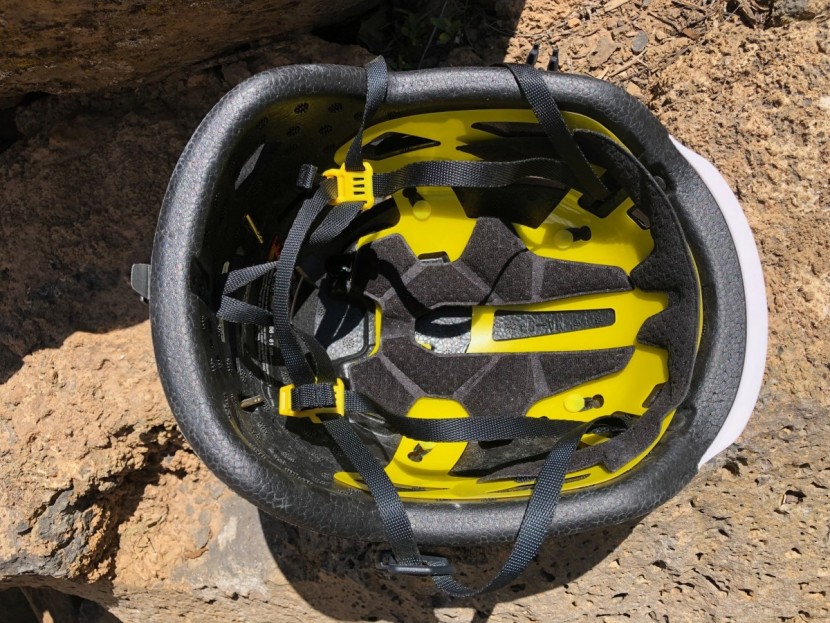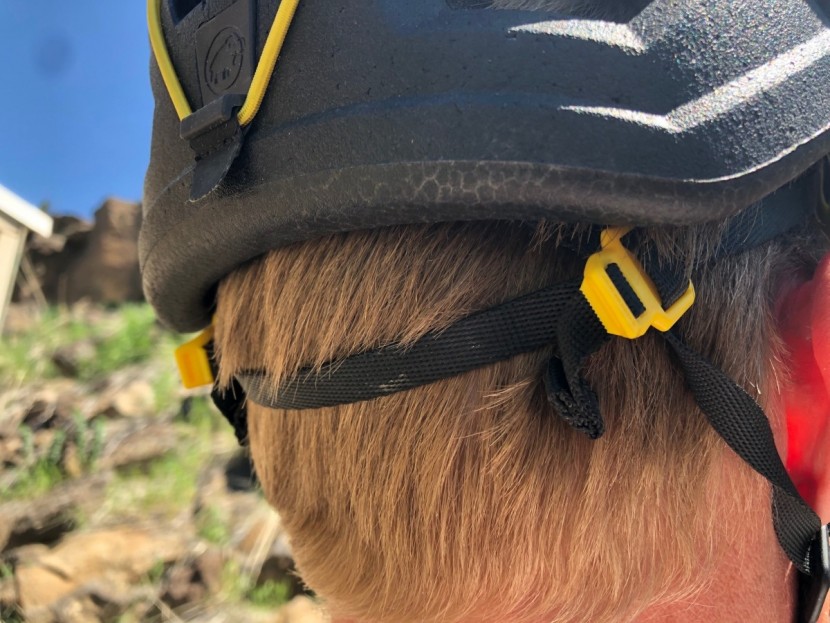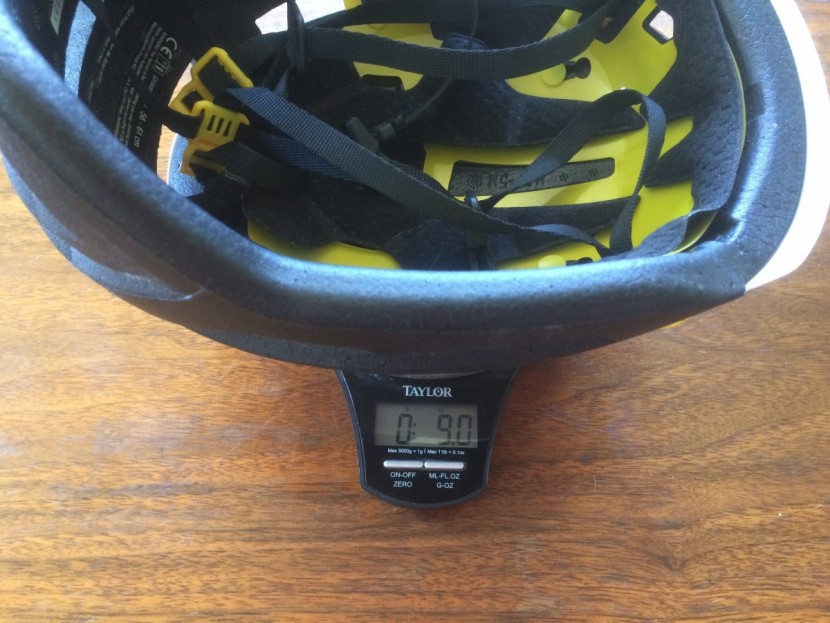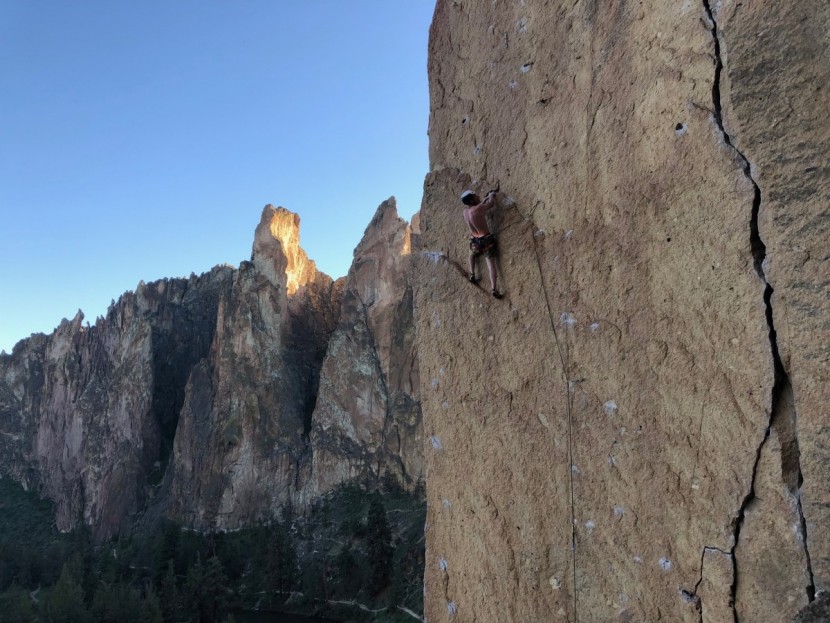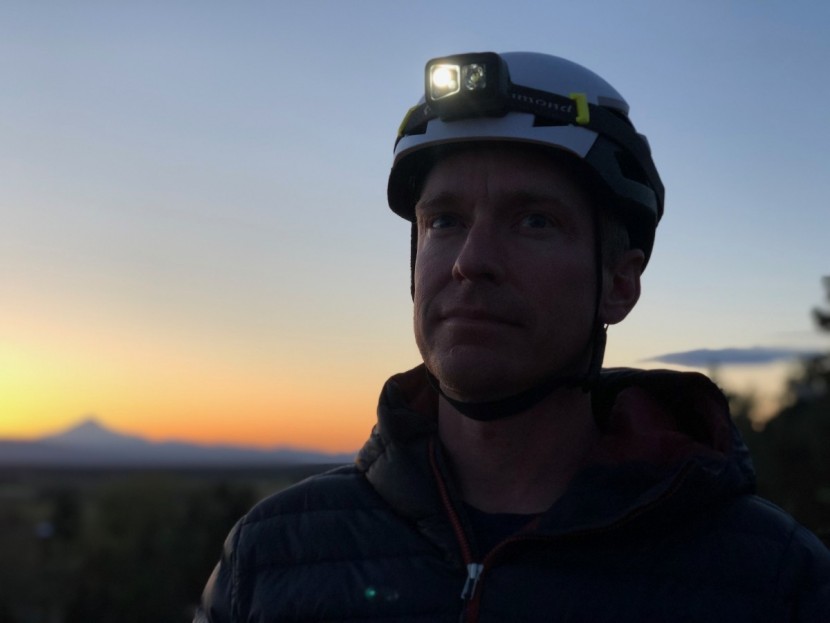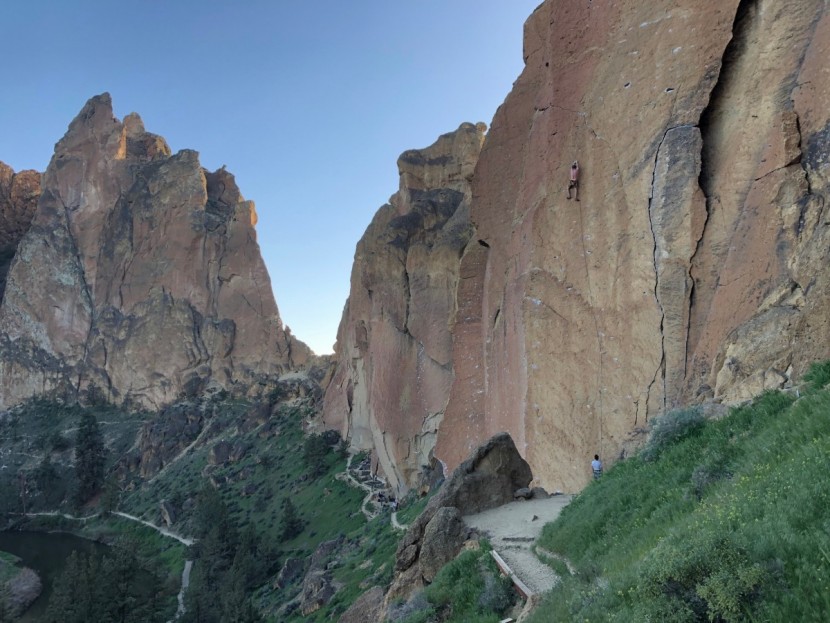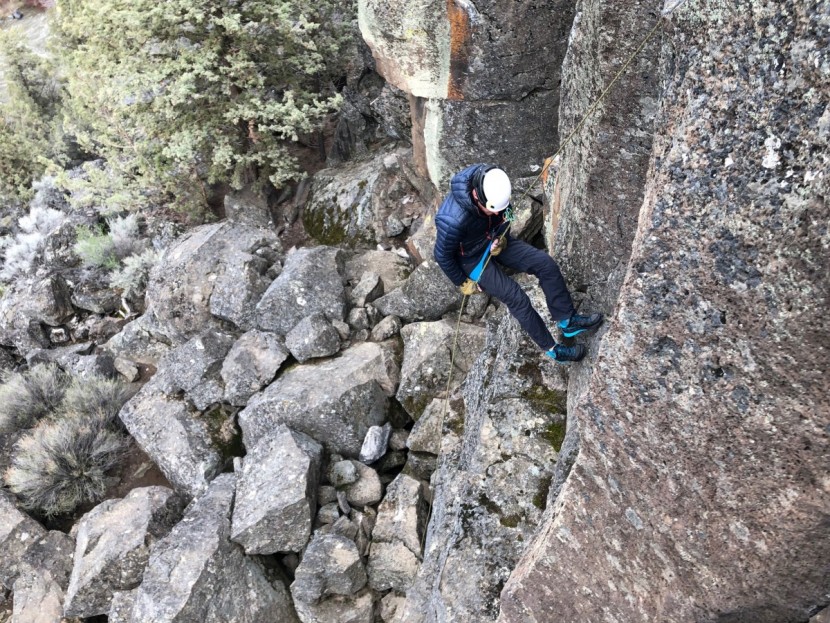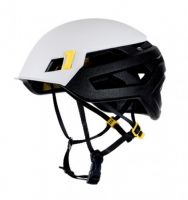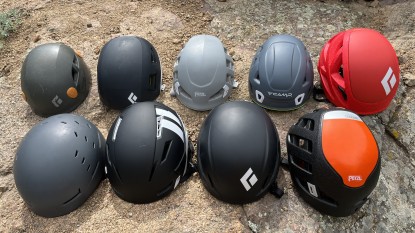Mammut Wall Rider Mips Review

Our Verdict
Our Analysis and Test Results
The Wall Rider Mips is a relatively lightweight foam helmet made of EPP foam with a hard plastic top piece that partially covers the outside for greater durability. The minimalist internal harness system is adjustable, but not nearly as much as helmets that have a plastic slider bar or click wheel tensioning system.
Comfort
This model is a comfortable, lightweight EPP foam helmet that relies on its shape for comfort. The insides cushion with thin foam pads that rest against the top and front of the head, and replacement pads come with your purchase so you can swap them out if they become too funky from sweat or flatten out over time. The shape of this helmet is fairly circular, and not as elongated. It is also shallower fitting and doesn't sit on the head as deeply as the Petzl models.
Whether this is the most comfortable helmet for you or a close second largely depends on the shape of your head. For our lead tester, it was more of the close second, not fitting as well as models with an oblong shape. He found slight pressure points on the back of the head and in the forehead, although these were virtually unnoticeable when climbing.
Adjustability
This helmet uses a straightforward and minimalistic webbing harness to hold it firmly on the head and to preserve the low weight. It's adjustable in the back by two webbing buckles which can rather easily be pulled tighter once the helmet is on the head if you know where to grab. While allowing for minimal adjustability, it is nice that there are two buckles to help keep the helmet centered, rather than just one.
The positioning of the chin strap along the V-yoke is effortless and easy to adjust with a sliding buckle, and likewise, the chin strap itself can easily be adjusted. These adjustments are far more user-friendly than the buckles found on all of the Black Diamond helmets.
Weight
Our size large helmet tipped the scales at 9.0 ounces, which is 0.5 ounces heavier than the version of this helmet without the Mips. So, for added brain protection technology, you only add 0.5 ounce of weight, which seems like a very fair trade in our opinion.
Despite this, the helmet is not exactly featherweight for using EPP foam. The harder plastic top piece adds some weight when compared to polycarbonate models, and so this helmet is merely average, rather than lightweight.
Ventilation
This model is fairly well-ventilated, perhaps even aided slightly by the Mips harness on the inside.
There are 16 vents scattered about on both sides, the rear, and even two in the front to allow air flow through the helmet. Despite being small, the vents in the front seem to add to the feeling of coolness as any breeze directly cools the forehead region.
Features
To accommodate a headlamp, there are two small plastic clips on the front of the helmet and an elastic bungee in the back. This layout is essentially the same as those used on other top lightweight models and is meant to be versatile for use with ski goggles as well.
While this system is effective for headlamps and goggles, we also noticed that the underlying tension in the front clips is far higher than on other helmets, which makes it harder than necessary to slide a band underneath them. This is, however, a relatively small gripe. The Mips system is really the star of the show. The internal Mips harness allows the helmet shell to move on the head, deflecting a large percentage of the impact forces that would otherwise be absorbed by your head, and potentially, your brain. While we can't verify these claims independently, we can say that one tester took an upside-down fall, banging his head and sustaining a concussion while wearing a different helmet. So the need for this technology in the climbing helmet market clearly exists.
Durability
The helmet is made entirely of EPP foam, known for being lighter, more resilient to taking multiple blows without cracking, but not quite as solid as EPS foam. To help add to the durability, Mammut covers the entire top and front of the helmet in a rather burly shield of hard plastic. While the exposed foam on the sides and rear can handle a little abuse, it is best to be careful how you treat this helmet in your pack or on the ground for best longevity.
We can't comment on how many blows this helmet can take before needing to be retired, but it is EN certified as a climbing helmet. We have spent plenty of days tossing it around at the crag, and have not seen any adverse wear that suggests that it needs to be excessively babied.
Should You Buy the Mammut Wall Rider Mips?
The Mammut Wall Rider Mips is worthy of recognition because it was the first climbing helmet to incorporate the Mips system. However, this technology has become well-incorporated within the climbing industry. As a result, cheaper helmets now exist that feature the same, once-innovative technology. Other high-end helmets are on par with the price point of the Wall Rider Mips, which is expensive. But we firmly believe that the difference in price can reasonably be viewed as a relatively cheap insurance against a potentially disastrous head injury. Even Mips technology aside, this is still a pretty great helmet.
What Other Climbing Helmets Should You Consider?
Since the introduction of the Mammut Wall Rider Mips, this technology has become nearly ubiquitous across high-end climbing helmets. Our overall favorite helmet, the Black Diamond Vision Mips, improves upon nearly every performance metric compared to the Wall Rider Mips. Black Diamond has also introduced a more affordable Mips helmet, the Capitan Mips. And for those who want to invest in a dual-certified helmet for rock climbing and skiing, our top choice is the Smith Summit Mips.
| Awards | |
|---|---|
| Price | $180 List Check Backcountry (on sale!) |
Overall Score  |
|
| Star Rating | |
| Bottom Line | A beefed up version of our one of our favorite helmets, but with Mips technology added in |
| Pros | Mips technology, lightweight, well-ventilated, comfortable |
| Cons | Expensive, not super adjustable |
| Rating Categories | Mammut Wall Rider Mips |
| Comfort (30%) | |
| Adjustability (20%) | |
| Weight (20%) | |
| Ventilation (10%) | |
| Features (10%) | |
| Durability (10%) | |
| Specifications | Mammut Wall Rider Mips |
| Measured Weight (Size Medium or M/L) | 9.0 oz |
| Shell Style | EPP Foam, Hard Plastic Top Piece |
| Certifications | EN 12492 |



